When you are launching a mobile app, taking it globally is a huge step. But it can be a complex process, especially when it comes to app localization. There are several factors to think about - from translation issues and cultural differences to marketing strategies and legal requirements.
In this quick guide, we will give you tips on how to make your app localization process as smooth and successful as possible. Let's start!
Table Of Contents:
- What Is App Localization?
- Mobile App Localization Vs. Mobile App Internationalization
- Main Considerations When Localizing An App
- Top Languages For App Localization
- Mobile App Localization Benefits
- App Store Localization
- Mobile App Localization Tools
- How To Localize A Mobile App?
- Let Us Summarize
- FAQ (Frequently Asked Questions)
You can directly jump to a section of your choice or keep scrolling.
Click here to download detailed infographic on app localization guide.
What Is App Localization?
App localization is the process of adapting an app to a particular language, market, culture, and the corresponding desired look and feel.
The process of customizing your mobile app to work in other languages can include spoken variations and dialects of the same language. The app must also suit the culture and other regional attributes. App localization is not just a translation of the language but reflects a change in content and layout catering to any country.
The top app localization services include:
- Localization of mobile, web apps, and software
- Platform, API, and integrations
- Cloud-based localization process
- Mobile app localization testing
Mobile App Localization Vs. Mobile App Internationalization
App internationalization is the process of customizing the code to make your app ready for the time localization happens. It involves taking care of font style, language orientation, content displays, and other minute details to deliver an in-sync user experience, irrespective of the users' background.
On the other hand, app localization is the process of rendering your app content to different languages and customizing other elements of the app, such as screenshots and preview videos, according to your target audience.
App Localization vs. App Translation
App translation is changing the text of the app into another language.
App localization refers to language translation plus using locally relevant graphics, units of measurement, colors, social networks, etc.
Main Considerations When Localizing An App
The essential factors to keep in mind when localizing a mobile app are:
-
Language: The text of your app should be translated accurately into the target language(s).
-
Interface: The user interface of your mobile app should be adapted for different regions. For instance, you may need to use different date formats or currencies.
-
Culture: You should take into account cultural differences like design preferences and social customs.
-
Legal requirements: There can be legal requirements governing how your mobile app can be used in certain countries. Ensure you are aware of the legal requirements and that you are compliant with them.
-
Marketing: You will need to create localized marketing materials like website translations, ads, and social media posts.
Top Languages For App Localization
Here's a list of the top 10 languages, along with their respective countries for mobile app localization:
- English - USA, UK, Australia, Canada
- Japanese - Japan
- Mandarin Chinese - Mainland China, Taiwan, Hong Kong
- Hindi - India
- Russian - Russia
- Korean - South Korea
- German - Germany
- Spanish - Mexico, Argentina
- Portuguese - Brazil
- Indonesian - Indonesia
You can refer to this list when deciding which countries and languages to focus on during the app localization process, depending on your app's type and promotion strategy.
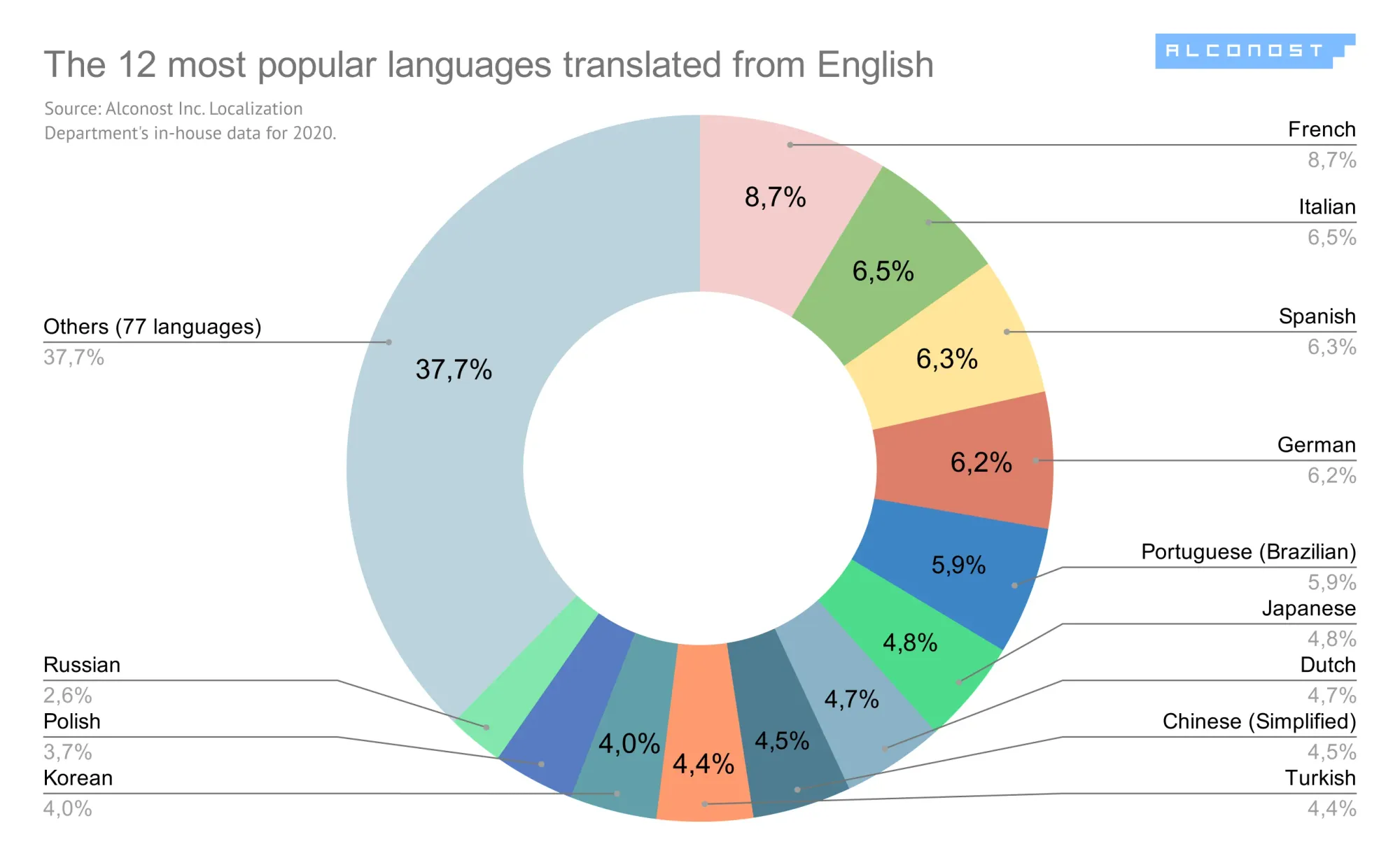
Source: Habr
Mobile App Localization Benefits
App localization improves the user experience for your global audience and expand beyond the English-speaking market. Here are the detailed benefits of mobile app localization.
Access To Global Reach
A multi-language app gives you better access to the global market in terms of exposure. This will help you to reach as many people as possible and improve your user ratings.
Sales Potential
With app localization, you can expand your reach by ensuring it's also available to markets based overseas. This is an excellent way to boost your downloads and ensure you provide all users with an improved user experience.
Better ROI
Increased ROI is guaranteed with the right mobile app localization strategy if implemented correctly, as app localization expands the target market, thus increasing the reach and downloads of your app.
If that's not enough to convince you, here are some mind-blowing stats:
- The United States, China, and Japan are far ahead of the rest of the world in total app revenue generation. If you are not targeting these markets, you are potentially losing out on significant revenue.
- Businesses that localize their iOS apps saw a whopping 128% more downloads than their peers who didn't.
- In the Google Play Store, 80% of countries in the top five for downloads and revenue are non-English speaking countries.
App Store Localization
App store localization is the practice of localizing the elements on the app's product page for a target market.
iOS App Localization
The Apple App Store supports 28 localizations, including Danish, Dutch, Chinese, English, German, Greek, and French. All parts of your product page need to be localized, including every section of the text. All images should be considered appropriate for the users as this can differ between cultures.
Ensure you closely study the local audiences in detail when it comes to app store localization using the right search terms. The correct translation of your app's name, keywords, and description will help local users find it more easily.
Android App Localization
There are approximately 77 different localizations available on Google Play. Identifying the best possible target markets for your business is essential at this stage, as localizing for all 77 languages can be difficult.
For app store optimization, you need to add a localized version of the app title and short and long descriptions in the Google Play Console.
Android apps run on several devices across different regions, so your app should handle text, numbers, currency, audio files, and graphics correctly to be fully localized.
Mobile App Localization Tools
App localization tools help to localize your app as efficiently as possible. Here are our top 3 picks for you to choose from:
Lokalise
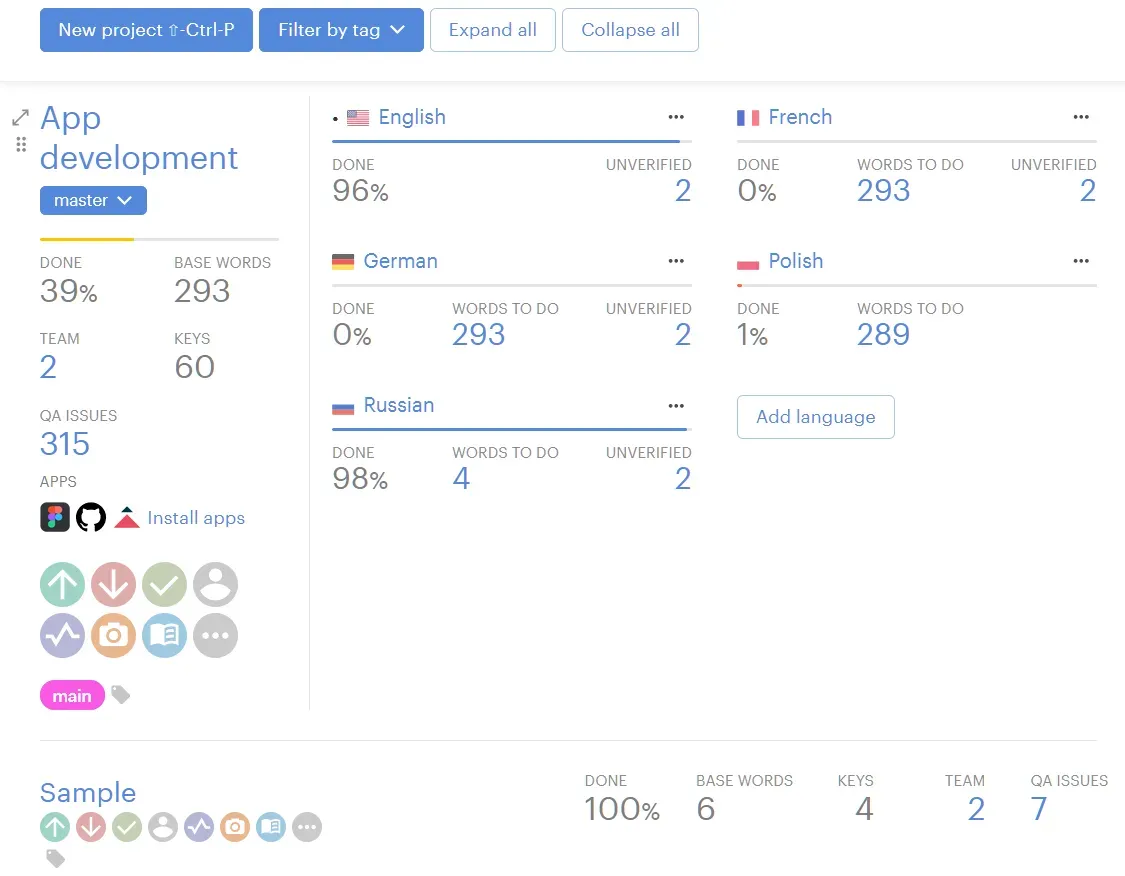
Introduced in 2016, Lokalise helps you translate your app. Features such as export webhooks, project chat, inline translation suggestions, and an API make it one of the most popular app localization tools.
Crowdin
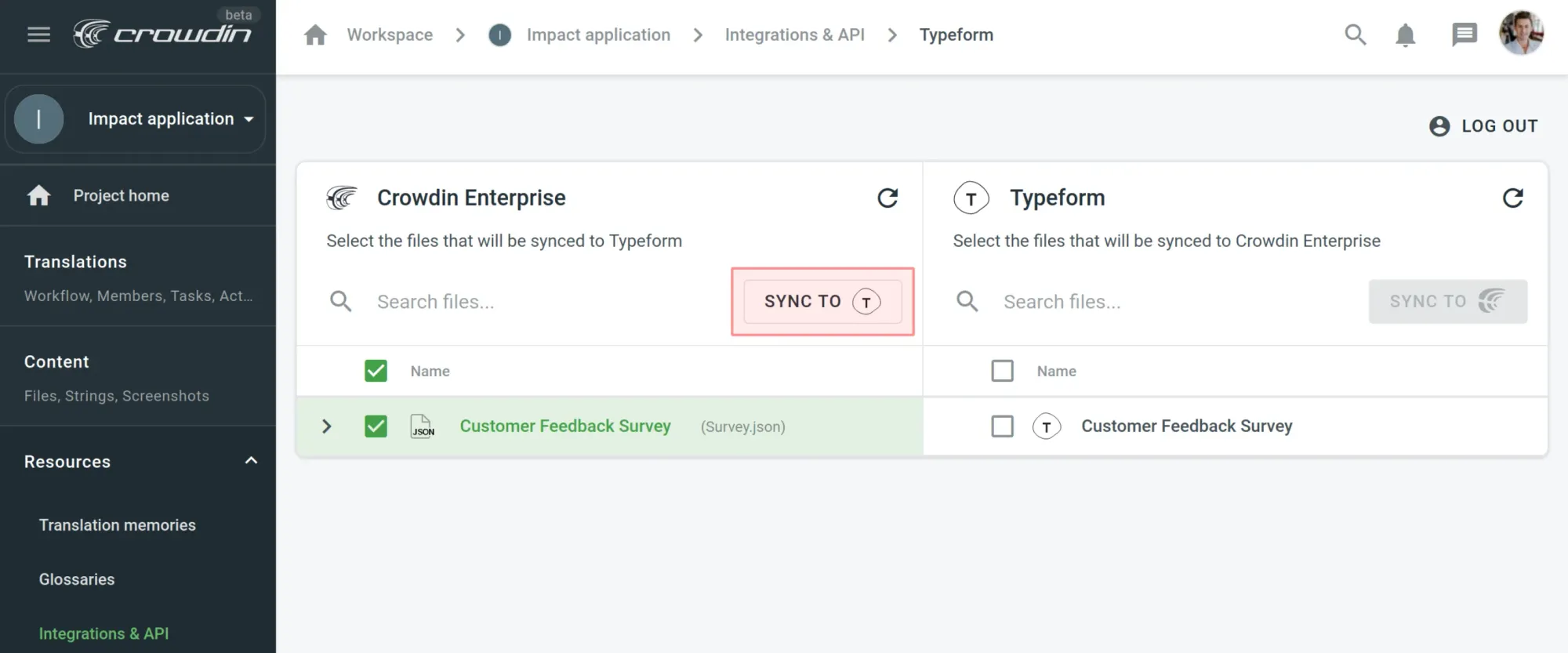
Crowdin is used by organizations that treat app localization as a part of their mobile app development process. It is known for accelerating and simplifying the translation of mobile and web apps, games, etc.
PhraseApp
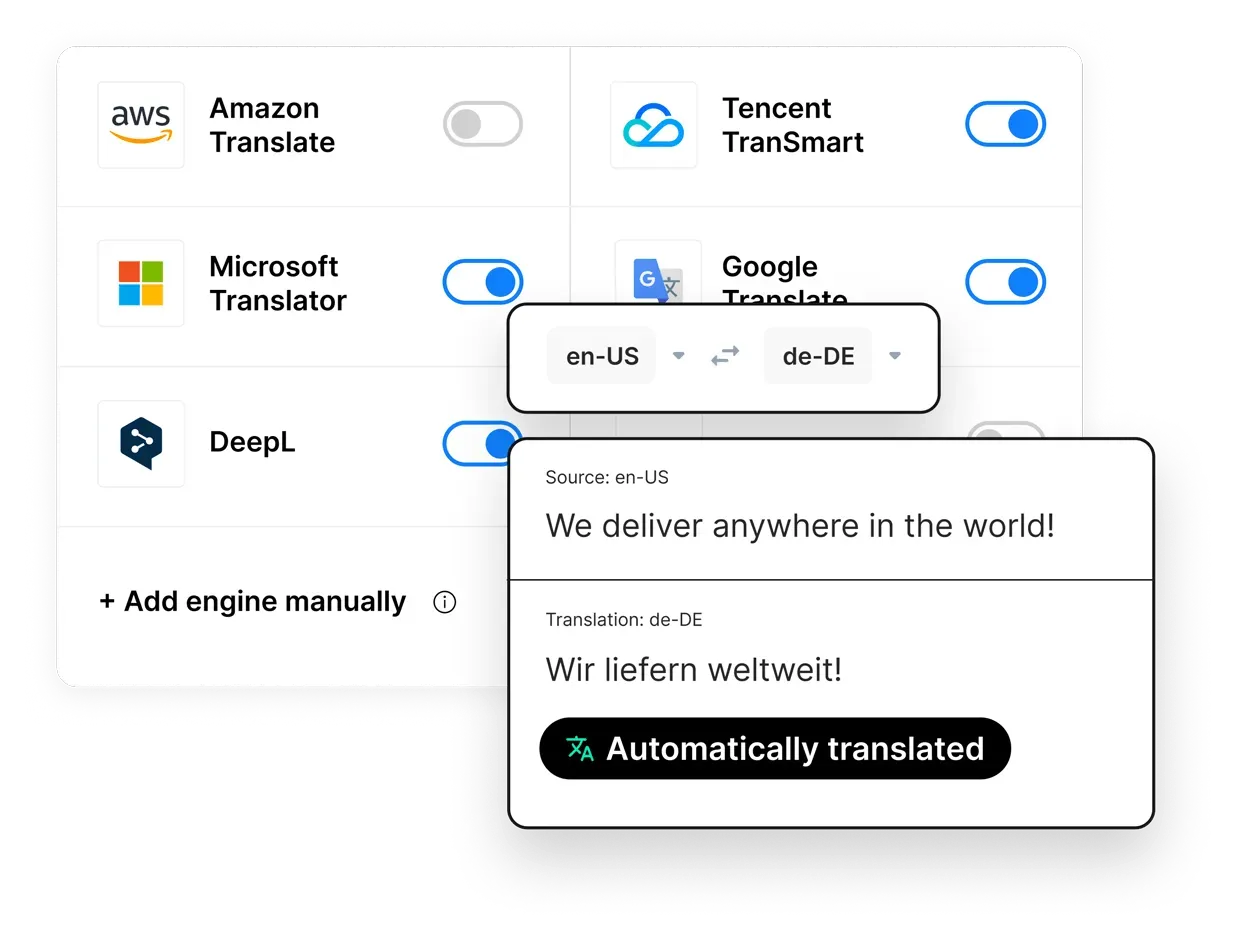
PhraseApp is an app localization tool for software translation management for all kinds of mobile and web apps. It helps in implementing a smart localization workflow, localization files online, adding contextual information to translations, working on software localization projects, and converting localization file formats.
Localize direct

Localize Direct is a localization management platform designed to simplify the translation process for game developers and software teams. With features like automated workflows, integration with popular tools, and real-time collaboration, it ensures seamless handling of multilingual content. Its intuitive interface and robust support for over 700 languages make it an ideal choice for companies aiming to expand their global reach efficiently.
How To Localize A Mobile App?
The process to localize a mobile app involves using the right set of skills, technical expertise and tools. Here is an in-depth list of steps to localize your app in the best way possible:
- Externalize Your Mobile App
- Layout The Whole Process
- App Content
- Location-based Push Notifications
- User Activity Feeds
- Support Pages
- Test Your Mobile App
- App Store Optimization For Mobile App
Externalize Your Mobile App
It's one of the first steps toward the process of app localization. Your mobile app resources and assets not just consist of code but also other data files such as tutorials, images, videos, etc.
So, to successfully localize your app, ensure you are correctly externalizing these assets so that it's easy to create the translated versions of each file.
Layout The Whole Process
When adding a localization facility to your app, ensure that the layout is prepared well in advance, so you have a clear idea of the structure you must follow while getting your app localized.
When creating the layout, keep track of the length of the words getting translated. This way, you will be able to keep note of the space the translated words are taking compared to the words of your source language.
App Content
Localizing your app's content will help you engage with your users better. Localization of app content such as date, time, units, editorial content, and alternative SDKs will help you a lot to connect with your target audience. You need to ensure that each of the content pieces in your app provides a localized experience to the users (including emails!)
Location-based Push Notifications
You should personalize your push notifications based on the location of your user. For example, you can use push notifications to allow your app users to know of those who have just joined your app from a nearby location. Stimulating curiosity and competitiveness by knowing who has recently joined an app from a nearby location will bag you an app session.
User Activity Feeds
Encourage your app users to share their milestones on in-app activity feeds. Let them look at each other's accomplishments in the app, where and how they have achieved them so far. This will help you nudge your app users to try their hand at the same tactics, resulting in an increase of your app usage. You can also use activity feeds to monitor how your app users use your app and offer location-specific tips that will help them to use your app more effectively.
Support Pages
Ensure that your support pages and other links in your app that help your app users access information are localized so that they can get the information in their native language. This will help you resolve user issues before your users get disengaged from using your app.
Test Your Mobile App
Once the process of app localization is completed, you need to test your mobile app thoroughly. It is necessary to carry out linguistic testing along with another localization testing to identify content and layout-related issues and errors.
Try to use the localized app on different devices with different screen sizes to counter bugs and other errors.
App Store Optimization For Mobile App
App store optimization (ASO) is a way through which you can refine your app store content so that users can find and download your app with minimal effort. You need to research your target markets before optimizing your app store's contents and search terms commonly searched for in the app store for apps similar to yours.
To make the local users find your app with utmost ease and comfort in the app store, you need to do a good job by translating your app's title along with working on keywords, descriptions, screenshots, and more.
For more information on how to carry out App Store Optimization the correct way, refer to our definitive guide to App Store Optimization
Infographic

Citation Policy: Please feel free to use these infographics in any commercial or non-commercial capacity. If you use the infographics, we require a reference back to Statusbrew Blog.
Let Us Summarize
In this article, we have covered all the important aspects you need to pay attention to when localizing your app and shared the exact steps to help you build a truly good localized product.
App localization has several advantages. All well-known app brands have given particular emphasis to app localization to consolidate their position in the global market. Though this process takes time, effort, and skill, once done correctly, it will help you position your business at the global level.
Need help tracking your online reviews on Google My Business, Google Play Store, App Store, and more? Sign up for a free demo with Statusbrew today to learn how we can help! ?
Statusbrew is an all-in-one social media management tool that supports Facebook, Instagram, Twitter, LinkedIn, YouTube, and even Google My Business.
FAQ (Frequently Asked Questions)
Here are some commonly asked questions about app localization:
How much does it cost to localize an app?
The factors affecting app localization rates are the complexity of the target language, the feasibility of the language pair, the number of languages you are translating the source content into, which app components you intend to localize, and the timeline of your localization project.
How do I get rid of localization on my iPhone?
Go to Settings -> Privacy & Security -> Location Services -> System Services. Tap Significant Locations and Clear History. This action will clear all your significant locations on any devices that are logged in with the same Apple ID.
How do I make an app available in every country?
Go to the Play Console and select your app. Select Release -> Production -> Countries/regions. Update your app's country selection and submit your app update.

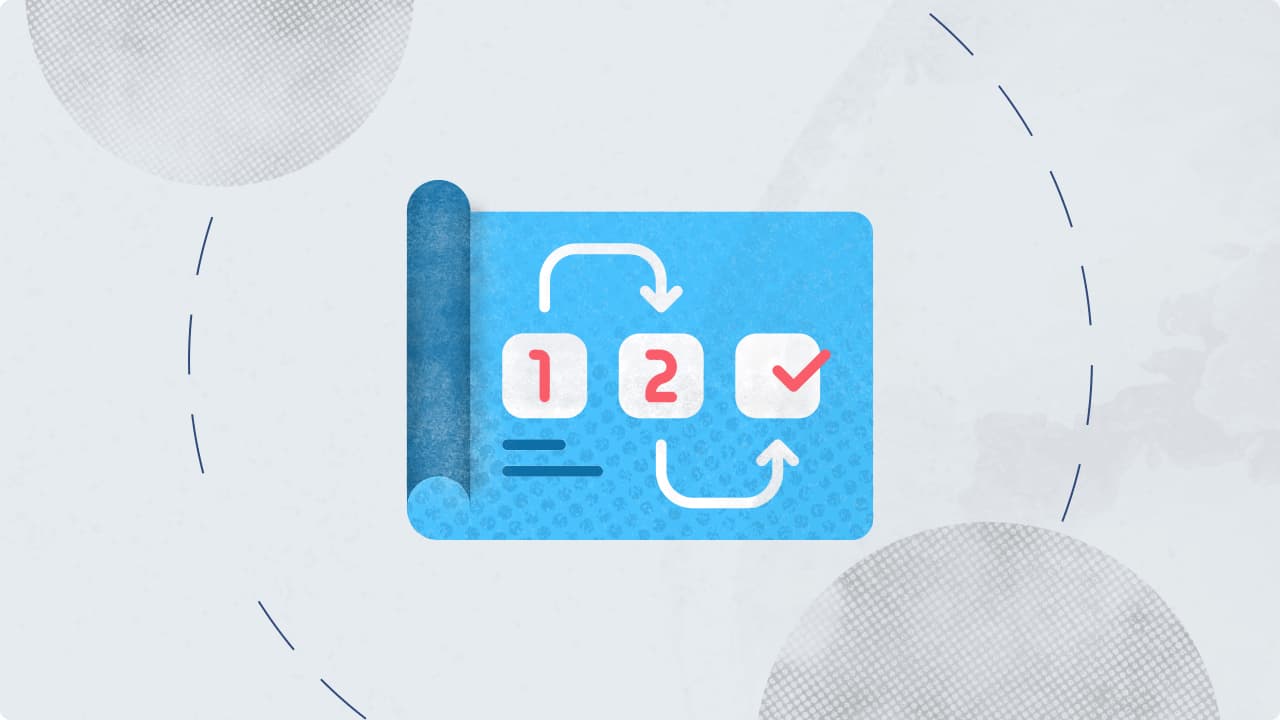


Explore the Statusbrew range of social media tools
Cancel anytime!